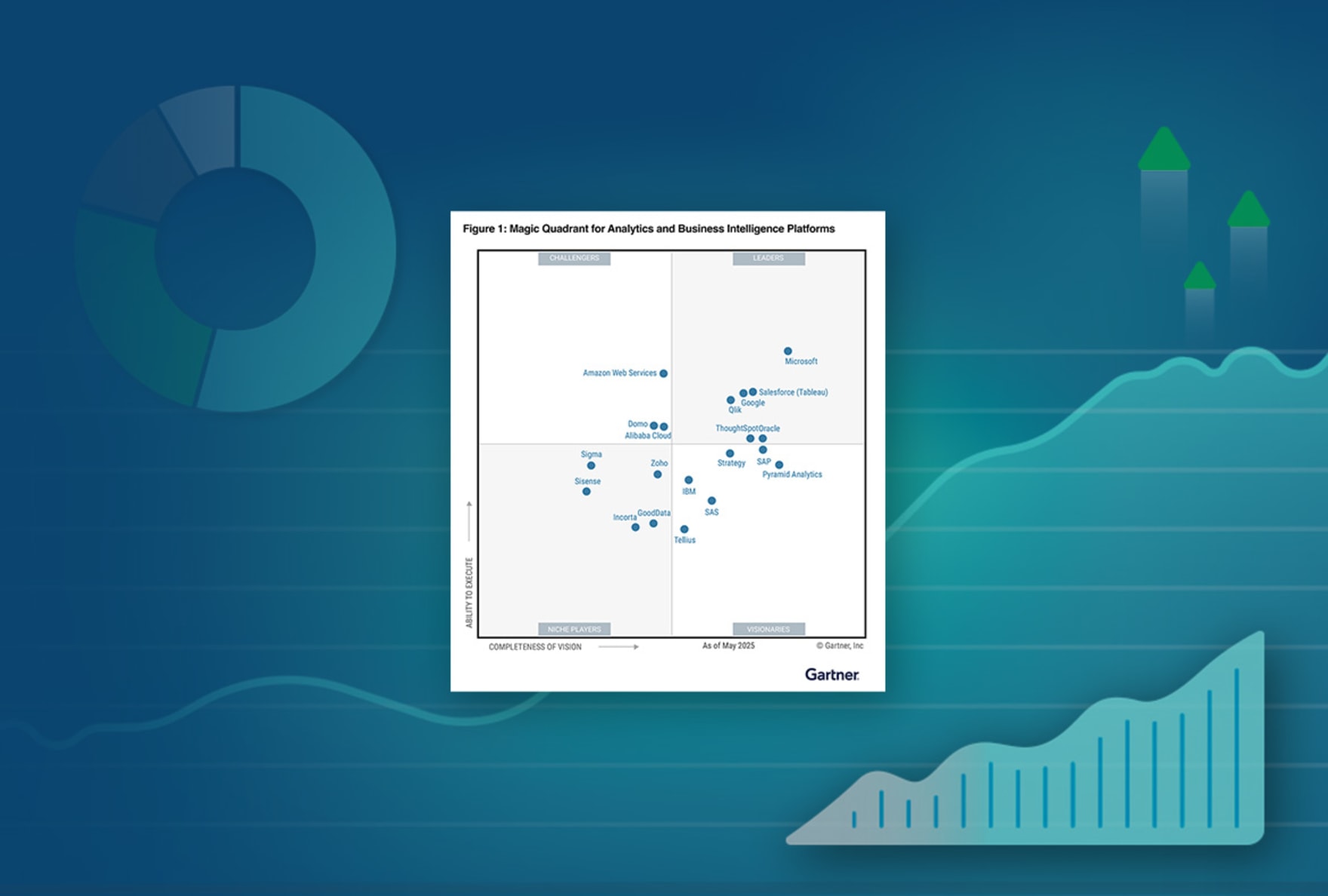Data Visualization Tools – Compare The 3 Gartner Leaders
In their 2023 Magic Quadrant Analytics & BI report, Gartner named only three vendors as Leaders: Qlik, Power BI and Tableau. That’s because interactive data visualization at scale requires a suite of supporting capabilities that only the very best tools deliver.
See below for in-depth reviews of the best data visualization tools on these 10 features:
1. Data Visualization
Most tools can visualize data in graphs, charts and maps. Modern tools make these visualizations interactive, and some offer AI to assist in chart creation, pinpoint outliers, and suggest new visuals. The best tools allow you to freely explore all your data, in any direction, directly from within the visualization.

Qlik Sense
Qlik offers a full range of interactive visualizations and robust AI support including association recommendations and data preparation. Plus, Qlik features a unique “associative” data engine which lets you explore ALL of your data from any angle, directly within the visualization.
Tableau
Tableau offers a full range of visualizations. In fact, this is what Tableau’s best known for. But as with their dashboards, you’ll be limited to the query paths the author preselected when you want to interact with the visualization.
Power BI
Power BI also offers a full range of visualizations. And while these visualizations are interactive, your exploration and filtering will be limited by preselected query paths.
2. Dashboard Exploration
Most data visualization tools can also create cool-looking dashboards. Unfortunately, most tools are traditional, query-based platforms which limit your exploration to predetermined paths. Your tool should allow end-users to explore their data freely, in any direction and to use data from unlimited sources.

Qlik Sense
As with visualizations, Qlik’s “associative” data engine which lets you explore ALL of your data from any angle, directly within dashboards. Qlik’s cognitive engine uses machine learning to get smarter over time – giving you ideas of what to explore next.
Tableau
Because Tableau uses a SQL database, users are restricted to specific, predetermined paths within a narrow portion of data. That means the platform only analyzes part of your data, leaving out key patterns and connections.
Power BI
Power BI also operates on a SQL database, restricting users to query paths that are linear and predetermined.






















































